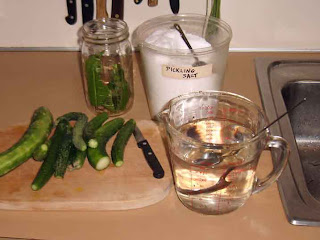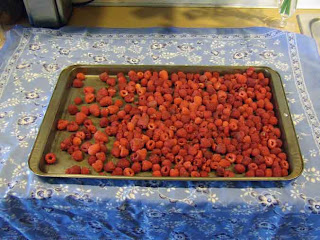By mid or late July it is a good idea to cruise through the tomato patch on a daily basis. Not only to pick the ripe tomatoes, but to be on the lookout for invaders. The invader I'll show you today might come from outer space, or at least from "Alice and Wonderland."

Here are happy tomatoes ripening on the vine.
And here is a tomato with a huge bite taken right out of it!
The culprit, of course is the tomato hornworm. Perfectly camouflaged, he is hard to find. But there are clues to his whereabouts. If you see any of these telltale signs in your garden, keep looking till you find him! First of all, there is the big bite out of your tomato. The second sign is skeletonized leaves. (Descriptive enough?) And third, you will see litle black poops on the leaves right below where he is.

If you are lucky, your hornworm will look like this one. "Lucky!" you say, "That is completely gross!" Yes, but this nature. Not always pretty.
The reason I say that you are lucky is because a predator has found the hornworm even before you did. She is a parasitic wasp, and the larvae she has deposited on this guy will not only kill him, but will hatch out many more beneficials to protect your future crops. So, it is important to leave him right where he is. Disgusting, I know. Speaking of disgusting...how do you get rid of the hornworm with no parasites?? He is too big to squish!! A proper burial, I suppose.
























